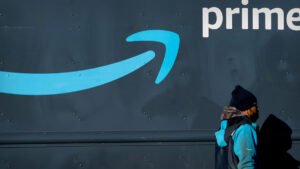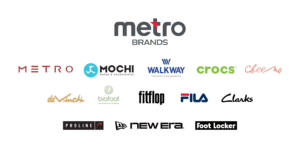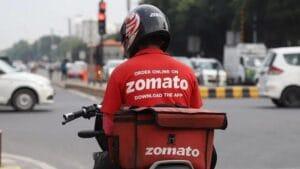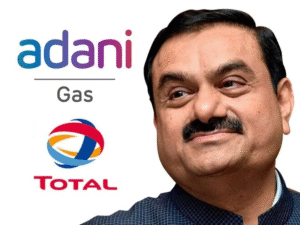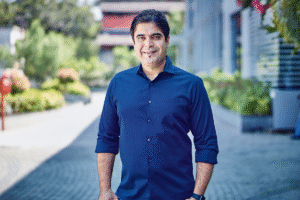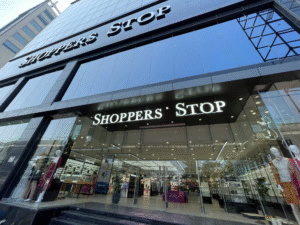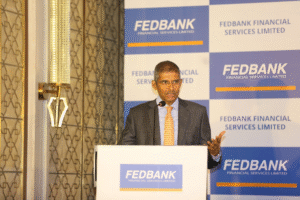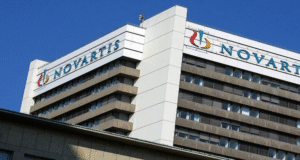1. At a Glance
Shoppers Stop is the elder statesman of Indian fashion retail — 33 years old, 284 stores, and more loyalty cards than the number of parking spots in its outlets. The company sells over 800 brands, spans 4.3 million sq ft of retail space, and still somehow managed to post a full-year PAT of ₹17.8 crore — about the price of one luxury handbag rack in its premium section. Stock P/E?315×, which makes you wonder if investors are buying shares or the Shoppers Stop Black Card.
2. Introduction
Founded in 1991, Shoppers Stop is India’s OG department store brand. Back when jeans were exotic and perfumes were imported by relatives from Dubai, this was the place to be. Fast forward to FY25 — competition from e-commerce, value retail, and every possible mall brand means Shoppers Stop has to work harder to keep its “premium” tag.
Its portfolio spans fashion, accessories, beauty, and home décor, with private brands contributing a healthy (read: higher margin) 12% of sales. The beauty segment is especially shiny — Armani Beauty, M.A.C, Estée Lauder, Jo Malone — the kind of counters you walk past while pretending to be on an important phone call.
The latest strategy?
- INTUNE: Value fashion for the masses (59 stores, ₹138 crore YTD).
- HomeStop: Premium home lifestyle stores.
- Beauty push: Dedicated beauty stores and exclusive brand tie-ups.
- Loyalty obsession: First Citizen members account for 83% of sales.
Yet despite all this, the June 2025 quarter saw aloss of ₹15.7 crore, proving retail is as much about footfalls as it is about fitting margins into tight trousers.
3. Business Model (WTF Do They Even Do?)
Shoppers Stop runs amulti-format retail empire:
- Department Stores(109): The flagship, offering premium brands under one air-conditioned roof.
- Beauty Specialty Stores(85): Luxury cosmetics and skincare boutiques.
- INTUNE Stores(59): Value fashion for budget-conscious shoppers.
- HomeStop(11): Premium home décor.
- Airport
- Stores(20): For people who panic-buy perfumes before boarding.
Revenue comes fromfashion, beauty, and home— with premium products making up 64% of sales. Private brands have higher margins, but currently only account for 12% of revenue. Expansion is aggressive — 52 new stores in 9MFY25, with 32 more planned in Q4.
4. Financials Overview
| Metric | Jun-25 | Jun-24 | Mar-25 | YoY % | QoQ % |
|---|---|---|---|---|---|
| Revenue (₹ Cr) | 1,161 | 1,069 | 1,064 | 8.58% | 9.1% |
| EBITDA (₹ Cr) | 172 | 143 | 170 | 20.3% | 1.2% |
| PAT (₹ Cr) | -15.7 | -23.0 | 2.0 | 31.7% | — |
| EPS (₹) | -5.71* | -2.09* | 0.18* | — | — |
*Annualised EPS based on Jun-25 is meaningless (negative). P/E not meaningful for the quarter.
Commentary:Sales grew at a healthy clip, EBITDA margins held, but interest + depreciation wiped out profits. This is a recurring theme in retail — rent, loans, and lights eat up as much as the customers do.
5. Valuation (Fair Value RANGE only)
Method 1 – P/E
- TTM EPS: ₹1.63
- Industry PE: 99.3×
- FV Range: ₹160 – ₹180
Method 2 – EV/EBITDA
- TTM EBITDA: ₹737 crore
- EV/EBITDA peer multiple: ~10×
- EV ≈ ₹7,370 crore → Per share: ₹200 – ₹220
Method 3 – DCF (Simplified)
- Assume 12% revenue CAGR, EBITDA margin ~16%, WACC 12%, terminal growth 3% → FV ≈ ₹180
